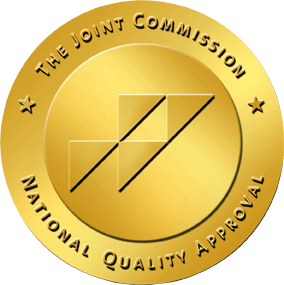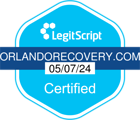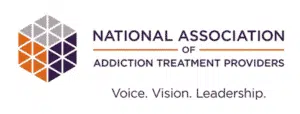What Is Ativan?
Ativan, or the generic lorazepam, belongs to the class of drugs known as benzodiazepines. These drugs work by binding to gamma-aminobutyric acid (GABA) receptors in the brain, which causes the release of GABA. This is the brain’s most common chemical. It helps stop overactive electrical signaling.
Ativan is used to treat a variety of conditions such as anxiety, insomnia due to stress or anxiety and continuous seizures, known as status epilepticus. It can also be given to calm down nervous surgery patients before anesthesia is given. In all cases, Ativan is used to produce a calming, sedative effect on the brain and nerves. However, these effects can lead to addiction and dependence.
Ativan Addiction
The Drug Enforcement Administration (DEA) lists Ativan as a Schedule IV substance. Schedule IV drugs have “a low potential for abuse and low risk of dependence.” However, 23% of benzodiazepine users become addicted within three months of starting use. The benzo overdose rate has also increased sevenfold. Between 2004 and 2011, the number of patients treated in emergency rooms for benzodiazepine misuse rose by 124%.
To be able to recognize Ativan addiction and overdose, it is critical to know the symptoms, signs and side effects. In addition, there are treatment options available to help immediately stop an overdose and help in the next steps of recovery.
Treatment Can Be Life Changing
Whether you are struggling with addiction, mental health or both, our expert team is here to guide you every step of the way. Don’t wait— reach out today to take the first step toward taking control of your life.
Is Ativan Addictive?
The main effect of Ativan is to produce a calming effect in the brain, which can act as a “high.” This high can become highly addictive, and someone may need to use more and more Ativan over time to achieve it; this is known as tolerance. From this, addiction and dependence can develop.
Ativan’s likelihood of leading to addiction varies from person to person. This risk can be influenced by several factors such as age, genetics and a history of substance or alcohol addiction.
Benzodiazepines, like Ativan or lorazepam, are meant to be taken for the shortest possible amount of time. To minimize the risk of addiction, Ativan should be taken as prescribed. People taking Ativan should also avoid using it long term.
How Does Ativan Addiction Start?
Most people who are prescribed Ativan don’t realize they can become addicted. However, it is very common among those who use this drug.
Over time, taking more Ativan to achieve the same effect can make someone become physically and psychologically dependent on the drug.
Ativan Addiction Statistics
Research suggests that many people use benzodiazepines. However, compared to other drugs, benzodiazepine use disorder is relatively low. Despite this, about 3.9 million people in the United States misused benzodiazepines in 2021 alone.
On a national scale, around 17% of drug overdose deaths from January 2019 to June 2020 were associated with benzodiazepines like Ativan. This underscores the risks of mixing drugs like Ativan with other substances, including alcohol. In Florida, 85% of benzo-related deaths in 2018 were attributed to the simultaneous use of benzodiazepines and opioids.
Mixing Ativan and Alcohol
Using Ativan and alcohol at the same time is very risky because it makes Ativan’s effects much stronger. This might seem harmless, but it can quickly lead to an accidental overdose.
According to the Substance Abuse and Mental Health Service Administration (SAMHSA), over 50,000 people visited the emergency room in 2011 for lorazepam abuse. Admitted patients for benzodiazepines were also abusing another substance along with it.
If any of these behaviors are familiar to you or sound like those of a family member, it may be time to get professional help from an addiction specialist.
Signs and Symptoms of Ativan Addiction
Using Ativan in ways other than its prescribed purpose can pose significant risks. There are many signs of Ativan misuse and addiction worth noting. These indications are more prone to appear when someone takes too much, uses it for too long or mixes it with other substances. Those with a background of substance or alcohol misuse also have a higher risk of Ativan misuse.
Behavioral Symptoms of Ativan Addiction
When someone is addicted to Ativan, they may not act like they normally would. Behaviors can include:
- Cravings that influence thoughts and actions
- Using the drug despite knowing it causes harm (physical, emotional, psychological)
- Spending money despite not being able to afford the drug
- Avoiding responsibilities like work, social activities and more
- Stealing or other risky behaviors in order to get the drug
- Having withdrawal symptoms when Ativan use stops
- Making attempts to stop using Ativan but failing
Physical Symptoms of Ativan Addiction
In addition to the behavioral symptoms, there are some physical symptoms to look out for if someone is abusing Ativan. These can include:
- Lacking motivation or energy to do things
- Weight loss or gain
- Drowsiness
- Slurred speech
- Impaired coordination, falling, accidents
- Difficulty breathing and low blood pressure
Psychological Symptoms of Ativan Addiction
Psychological symptoms can also develop as a result of Ativan addiction and prolonged use. If someone has underlying depression, Ativan use and addiction may amplify their condition; if a person is not properly treated with antidepressants, these symptoms may worsen. Some psychological symptoms of Ativan addiction include:
- Difficulty concentrating and remembering things
- Headaches
- Weakness
- Insomnia
- Anxiety
Effects of Ativan Addiction
Once Ativan addiction has begun, higher and higher doses are needed to achieve the same effects of sedation and calmness; in other words, this is the high they are looking for. In some cases, Ativan can be combined with other drugs to help amplify these effects. Ativan can be taken with opioids, alcohol and other benzodiazepines or central nervous system (CNS) depressants, which can become dangerous.
These drugs are all CNS depressants. In this category of drugs, severe sedation, respiratory depression and coma can occur. All of these side effects can be life-threatening. Someone who uses Ativan together with opioids has an increased risk of dying from these harmful drug interactions.
Ativan acts quickly in the brain, and its effects have a rapid peak. Someone who misuses multiple substances together with Ativan can prefer this effect. Opioid users can also use Ativan to manage withdrawal symptoms on their own rather than through a medically assisted detox program.
Long-Term Side Effects of Ativan Abuse
There are around four million people who use benzodiazepines daily. Many of them fall into the category for having substance dependence. This dependence can develop over time and, eventually, these people will display long-term side effects of Ativan use.
Cognitive impairment can develop with long-term Ativan abuse. This is because the drug causes changes in the brain’s neurons. Symptoms of impairment include:
- Drowsiness
- Uncoordinated movements
- Amnesia
- Slow reflexes
Many other side effects from short-term use can continue to occur long-term as well, including decreased heartbeat and blood pressure, insomnia and anxiety. Ativan is effective in treating anxiety disorders and insomnia for only the recommended duration (a few weeks.)
After this, it loses its power to help these conditions. However, the body is now reliant on the drug, so someone may continue to take it. They also may take higher doses to compensate for the loss of effectiveness.
Ativan is metabolized by the liver. Therefore, damage is possible as a result of long-term use. Elderly patients or those with decreased liver function from disease or alcohol use need to be monitored.
Ativan Overdose
If too much Ativan is taken at one time, an overdose can occur. Overdose from a benzodiazepine like Ativan or lorazepam can be fatal. Benzodiazepines depress the normal pace of chemicals in the central nervous system. Such depression can plummet to a point where breathing stops. An understanding of the dangers of this drug provides further motivation to seek treatment for Ativan abuse.
Signs of Ativan Overdose
Signs of overdose can include:
- Slurred speech or trouble speaking
- Shakiness, trembling and problems with coordination
- Excessive sweating
- Unusual tiredness, weakness or drowsiness
- Loss of energy or strength
- Difficulty breathing
Ativan Overdose Treatment
In the event that an overdose occurs, there are treatments available to help immediately that may save someone’s life. Flumazenil is a benzodiazepine antagonist that can reverse the effects of Ativan overdose. In the brain, flumazenil competes with Ativan for binding sites in the brain; when flumazenil binds, it is able to stop the effects of GABA and reverses sedation and calming effects. It can also reverse respiratory depression (slow, labored breathing), memory impairment and motor associated with benzodiazepine overdose.
Although it is highly effective as an immediate treatment for Ativan overdose, flumazenil does not address the underlying addiction and associated misuse.
Ativan Addiction Withdrawal and Detox
When Ativan is used for a long period of time, the body and brain become used to its presence; when it is taken away, the body goes through shock and an adjustment period known as withdrawal. Withdrawal can occur when dosing is stopped after as little as one week of treatment with Ativan.
Withdrawal from Ativan can differ from one person to another. It hinges on factors such as the amount and duration of Ativan use, as well as the potential use of other substances. It’s essential to consult your healthcare provider before discontinuing Ativan to ensure a safe and suitable approach.
Ativan Withdrawal Symptoms
In extreme situations of Ativan addiction, suddenly stopping or tapering off too quickly can lead to risky withdrawal symptoms such as hallucinations, seizures or even fatal outcomes. In less severe cases, Ativan withdrawal may bring about bothersome symptoms like difficulty sleeping, trembling or irritability.
Physical Symptoms of Ativan Withdrawal
Some physical Ativan addiction withdrawal symptoms can include:
- Headache
- Sweating
- Dizziness/vertigo
- Fast heartbeat (tachycardia)
- Tingling or numbness in fingers and/or toes
- Loss of appetite
- Vomiting and diarrhea
Psychological Symptoms of Ativan Withdrawal
Eventually, withdrawal symptoms will also set in after use, which can have major mental impacts. Psychological withdrawal symptoms from Ativan can include:
- Anxiety
- Depression
- Insomnia
- Confusion
- Hallucinations or delirium
- Agitation or irritability
- Suicidal thoughts
Medical Detox for Ativan Withdrawal
Typically, Ativan detox involves three phases. The initial days may bring about “rebound” anxiety and insomnia. The second phase, spanning approximately 10 to 14 days, is often the toughest. It is marked by a range of symptoms from mild headaches and sleep difficulties to hallucinations, tremors or seizures. The final phase may see the return of anxiety. This anxiety can persist if left untreated.
At Orlando Recovery Center Drug and Alcohol Rehab, we provide comprehensive support throughout the Ativan detox and withdrawal process. Our team of medical professionals ensures your safety and comfort during detox by closely monitoring symptoms and offering treatment as needed.
We can also create a personalized Ativan tapering plan to minimize the risk of distressing or dangerous symptoms. Additionally, our experts are equipped to evaluate and address various other conditions, such as anxiety and sleep disorders.
How Long Does Ativan Stay in Your System?
Several factors influence how long Ativan remains in your system. These include your usage patterns, age and overall health. Individuals with impaired liver or kidney function may accumulate Ativan more than others.
The duration of detection can vary based on what a drug test aims to identify—either the drug itself or its metabolites. The type of sample collected also affects how long it can be detected. Typically, Ativan can be detected for 50 to 100 hours after consumption. Here are approximate detection windows for various sample types:
- Urine: Ativan can be detected for one to seven days.
- Blood: Ativan is detectable for nine to 16 hours.
- Hair: While not always present in hair, Ativan and its metabolites can generally be detected for up to 90 days.
- Saliva: Ativan may appear in saliva as soon as 15 minutes after use, with some tests capable of detecting it for up to eight hours.
Ativan Addiction Treatment
The type and extent of treatment required for recovery from Ativan addiction depend on how long it has been and how severe it is. Most individuals begin with a medical detoxification. During this treatment, their body gradually eliminates Ativan under medical supervision. After medical detox, patients typically transition to either inpatient or outpatient care. From there, they will progress through various stages of recovery as their health improves.
For those struggling with Ativan use, the most effective path to recovery often involves seeking treatment at an inpatient or outpatient rehabilitation facility. These treatment programs make the detox process more manageable and provide education and support throughout the recovery journey.
Inpatient Rehab for Ativan Addiction
Inpatient rehabilitation is a higher level of care where patients stay at the facility full-time during treatment. This level of care is typically advised for people with moderate to severe substance use disorders. Inpatient rehab can include:
- 24/7 monitoring and support from medical staff
- Psychiatric and medical health appointments
- Group and individual therapy
- Support groups
- Family counseling
- Recreational therapies
- Medication management
- Case management
- Relapse prevention
Partial Hospitalization Program (PHP)
Partial hospitalization programs (PHPs) provide a middle ground between inpatient and outpatient care. They offer more flexibility than inpatient treatment while still providing supervision and monitoring. PHPs often include similar services and treatments as inpatient care, allowing patients to stay at the facility.
Intensive Outpatient Program (IOP)
Intensive outpatient programs (IOPs) are a step down in rehab care. Patients in IOPs attend several hours of treatment each week while living at home or in a sober living community. They receive many of the same treatments as higher levels of care but must maintain their sobriety outside the facility. IOPs are often suitable for individuals with mild to moderate addictions and supportive home environments.
Outpatient Rehab for Ativan Addiction
Outpatient rehab allows people to live at home while receiving treatment at the facility. This level of care offers flexibility for patients to continue working or maintaining their home life. However, patients are fully responsible for their recovery. Outpatient care provides many of the same treatments as higher levels of care but requires fewer hours per week. It is often the next step for individuals who have completed inpatient or PHP programs.
Get Help for Ativan Addiction Today
Every day, the Orlando Recovery Center Drug and Alcohol Rehab, led by a team of licensed experts, helps people start their journey to long-term recovery. Their programs focus on keeping patients safe and comfortable during detox and rehab treatment.
Ativan addiction is challenging. You might feel hopeless, worn down and stressed. The team at Orlando Recovery Center Drug and Alcohol Rehab is standing by to help you take a step toward hope and healing today. Reach out and start your lifelong journey to recovery.










